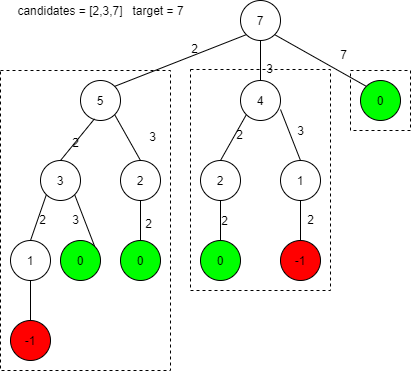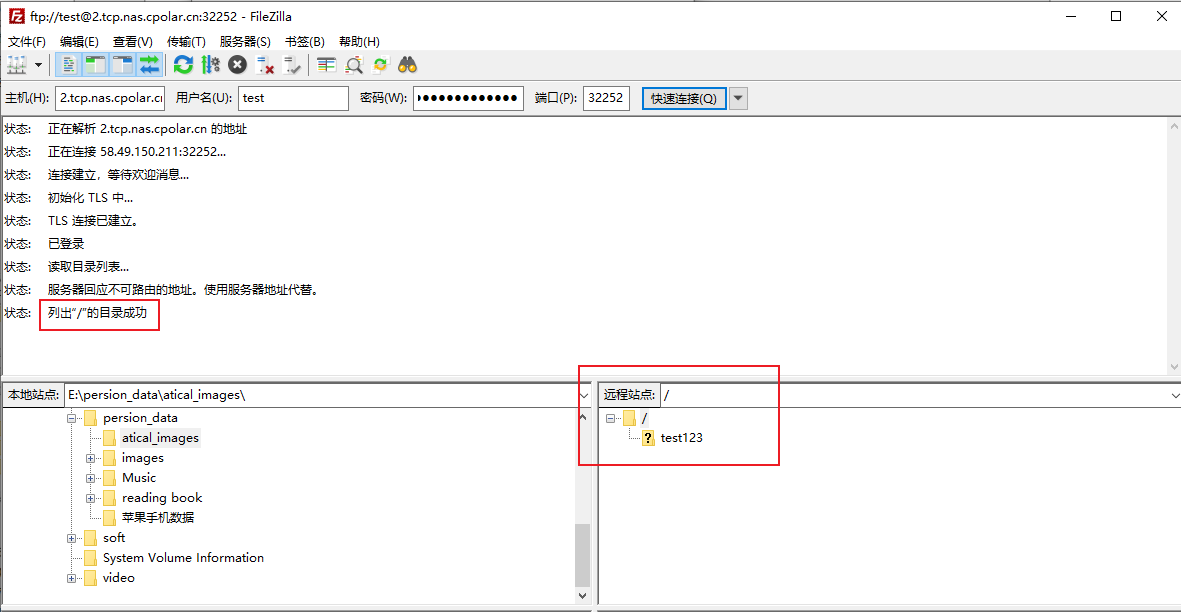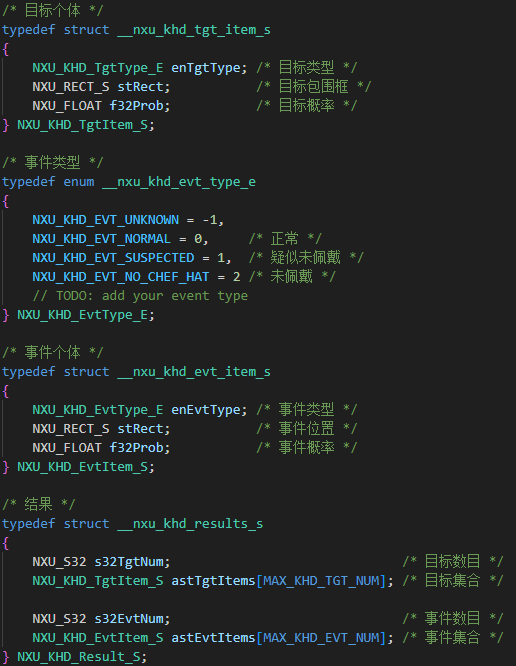一、nginx简介
Nginx是一款轻量级的Web服务器/反向代理服务器及电子(IMAP/POP3)代理服务器。
Nginx由俄罗斯的程序设计师Igor Sysoev所开发,最初供俄国大型的入口网站及搜寻引擎Rambler使用。
第一个公开版本0.1.0发布于2004年10月4日。其将源代码以类BSD许可证的形式发布,因它的稳定性、丰富的功能集、示例配置文件和低系统资源的消耗而闻名。2011年6月1日,nginx 1.0.4发布。
nginx的特点是占有内存少,并发能力强,事实上nginx的并发能力确实在同类型的网页服务器中表现较好,中国大陆使用nginx网站用户有:百度、京东、新浪、网易、腾讯、淘宝等。
二、nginx的特性与优点
1、nginx特性
Nginx是一个很牛的高性能WEB和反向代理服务器,它具有很多非常优越的特性:
(1)在高连接并发情况下,nginx是apache服务器不错的替代品,能够支持高达5万个并发连接数的响应
(2)使用epoll and kqueue作为开发模型
(3)Nginx作为负载均衡服务器:nginx既可以在内部直接支持和PHP程序对外进行服务,也可以支持作为HTTP代理服务器对外进行服务
(4)Nginx采用C进行编写,不论系统资源开销还是CPU使用效率都比Perlbal要好很多。
2、nginx的优点
(1)高并发连接:官方测试能够支撑5万并发连接,在实际生产环境中跑到2-3万并发连接数
(2)内存消耗少:在3万并发连接下,开启的10个nginx进程才消耗150M内存(15M*10=150M)
(3)配置文件非常简单:风格跟程序一样通俗易懂
(4)成本低廉:nginx为开源软件,可以免费使用。而购买F5 BIG-IPNetScaler等硬件负载均衡交换机则需要十多万至几十万人民币
(5)支持Rewrite重写规则:能够根据域名、URL的不同,将HTTP请求分到不同的后端服务器群组
(6)内置的健康检查功能:如果Nginx Proxy后端的某台Web服务器宕机了,不会影响前端访问
(7)节省带宽:支持GZIP压缩,可以添加浏览器本地缓存的Header头
(8)稳定性高:用于反向代理,宕机的概率微乎其微
(9)模块化设计:模块可以动态编译
(10)外围支持好:文档全,二次开发和模块较多
(11)支持热部署:可以不停机重载配置文件
(12)支持事件驱动、AIO(AsyncIO,异步IO)、mmap(Memory Map,内存映射)等性能优化
三、nginx的功能及应用类别
1、nginx的基本功能
(1)静态资源的web服务器,能缓存打开的文件描述符
(2)http、smtp、pop3协议的反向代理服务器
(3)缓存加速、负载均衡
(4)支持FastCGI(fpm,LNMP),uWSGI(Python)等
(5)模块化(非DSO机制),过滤器zip、SSI及图像的大小调整
(6)支持SSL
2、nginx的扩展功能
(1)基于名称和IP的虚拟主机
(2)支持keepalive
(3)支持平滑升级
(4)定制访问日志、支持使用日志缓冲区提高日志存储性能
(5)支持URL重写
(6)支持路径别名
(7)支持基于IP及用户的访问控制
(8)支持速率限制,支持并发数限制
3、nginx的应用类别
(1)使用nginx结合FastCGI运行PHP、JSP、Perl等程序
(2)使用nginx作反向代理、负载均衡、规则过滤
(3)使用nginx运行静态HTML网页、图片
(4)nginx与其他新技术的结合应用
四、nginx的模块与工作原理
nginx由内核和模块组成。其中,内核的设计非常微小和简洁,完成的工作也非常简单,仅仅通过查找配置文件将客户端请求映射到一个location block(location是nginx配置中的一个指令,用于URL匹配),而在这个location中所配置的每个指令将会启动不同的模块去完成相应的工作
1、nginx的模块分类
nginx的模块从结构上分为核心模块、基础模块和第三方模块
(1)HTTP模块、EVENT模块和MAIL模块等属于核心模块
(2)HTTP Access模块、HTTP FastCGI模块、HTTP Proxy模块和HTTP Rewrite模块属于基本模块
(3)HTTP Upstream模块、Request Hash模块、Notice模块和HTTP Access Key模块属于第三方模块
用户根据自己的需要开发的模块都属于第三方模块。正是有了如此多模块的支撑,nginx的功能才会如此强大
nginx模块从功能上分为三类,分别是:notify–handlers
(1)Handlers(处理器模块)。此类模块直接处理请求,并进行输出内容和修改headers信息等操作。handlers处理器模块一般只能有一个
(2)Filters(过滤器模块)。此类模块主要对其他处理器模块输出的内容进行修改操作,最后由nginx输出
(3)Proxies(代理器模块)。就是nginx的HTTP Upstream之类的模块,这些模块主要与后端一些服务比如fastcgi等操作交互,实现服务代理和负载均衡等功能
nginx模块分为:
核心模块、事件模块、标准Http模块、可选Http模块、邮件模块、第三方模块和补丁等nginx基本模块:所谓基本模块,指的是nginx默认的功能模块,它们提供的指令,允许你使用定义nginx基本功能的变量,在编译时不能被禁用,包括:
(1)核心模块:基本功能和指令,如进程管理和安全。常见的核心模块指令,大部分是放置在配置文件的顶部
(2)事件模块:在Nginx内配置网络使用的能力。常见的events(事件)模块指令,大部分是放置在配置文件的顶部
(3)配置模块:提供包含机制
2、nginx的工作原理
nginx的模块直接被编译进nginx,因此属于静态编译方式。
启动nginx后,nginx的模块被自动加载,与Apache不一样,首先将模块编译为一个so文件,然后在配置文件中指定是否进行加载。
在解析配置文件时,nginx的每个模块都有可能去处理某个请求,但是同一个处理请求只能由一个模块来完成。
nginx的进程架构:
启动nginx时,会启动一个Master进程,这个进程不处理任何客户端的请求,主要用来产生worker线程,一个worker线程用来处理n个request。
Nginx进程模型
Nginx默认采用多进程工作方式,Nginx启动后,会运行一个master进程和多个worker进程。其中master充当整个进程组与用户的交互接口,同时对进程进行监护,管理worker进程来实现重启服务、平滑升级、更换日志文件、配置文件实时生效等功能。worker用来处理基本的网络事件,worker之间是平等的,他们共同竞争来处理来自客户端的请求。

在创建master进程时,先建立需要监听的socket(listenfd),然后从master进程中fork()出多个worker进程,如此一来每个worker进程多可以监听用户请求的socket。一般来说,当一个连接进来后,所有在Worker都会收到通知,但是只有一个进程可以接受这个连接请求,其它的都失败,这是所谓的惊群现象。nginx提供了一个accept_mutex(互斥锁),有了这把锁之后,同一时刻,就只会有一个进程在accpet连接,这样就不会有惊群问题了。
先打开accept_mutex选项,只有获得了accept_mutex的进程才会去添加accept事件。nginx使用一个叫ngx_accept_disabled的变量来控制是否去竞accept_mutex锁。ngx_accept_disabled = nginx单进程的所有连接总数 / 8 -空闲连接数量,当ngx_accept_disabled大于0时,不会去尝试获取accept_mutex锁ngx_accept_disable越大,于是让出的机会就越多,这样其它进程获取锁的机会也就越大。不去accept,每个worker进程的连接数就控制下来了,其它进程的连接池就会得到利用,这样,nginx就控制了多进程间连接的平衡。
每个worker进程都有一个独立的连接池,连接池的大小是worker_connections。这里的连接池里面保存的其实不是真实的连接,它只是一个worker_connections大小的一个ngx_connection_t结构的数组。并且,nginx会通过一个链表free_connections来保存所有的空闲ngx_connection_t,每次获取一个连接时,就从空闲连接链表中获取一个,用完后,再放回空闲连接链表里面。一个nginx能建立的最大连接数,应该是worker_connections * worker_processes。当然,这里说的是最大连接数,对于HTTP请求本地资源来说,能够支持的最大并发数量是worker_connections * worker_processes,而如果是HTTP作为反向代理来说,最大并发数量应该是worker_connections * worker_processes/2。因为作为反向代理服务器,每个并发会建立与客户端的连接和与后端服务的连接,会占用两个连接。
五、nginx搭建
环境:
rocky Linux9 虚拟机
192.168.100.111 nginx.example.com
检查 firewalld 与 selinux 是否关闭
[root@nginx ~]# getenforce
Disabled
[root@nginx ~]# systemctl status firewalld
○ firewalld.service - firewalld - dynamic firewall daemon
Loaded: loaded (/usr/lib/systemd/system/firewalld.service; disabled; preset: enabled)
Active: inactive (dead)
Docs: man:firewalld(1)
1、安装软件包 并 创建ngnix用户
//开发工具包
[root@nginx ~]# mount /dev/cdrom /mnt/
mount: /mnt: WARNING: source write-protected, mounted read-only.
[root@nginx ~]# yum -y groupinstall “Development Tools”
//创建你滚下服务用户
[root@nginx ~]# useradd -r -M -s /sbin/nologin nginx
[root@nginx ~]# id nginx
uid=991(nginx) gid=988(nginx) groups=988(nginx)
//依赖包及常用工具
[root@nginx ~]# yum -y install pcre-devel openssl openssl-devel gd-devel gcc gcc-c++ make zlib-devel wget lrzsz chrony
[root@nginx ~]# systemctl restart chronyd
[root@nginx ~]# systemctl enable chronyd
[root@nginx ~]# hwclock -w
2、创建日志存放目录和包文件存放目录
[root@nginx ~]# mkdir -p /var/log/nginx
[root@nginx ~]# chown -R nginx.nginx /var/log/nginx/
[root@nginx ~]# ll /var/log/ | grep nginx
drwxr-xr-x 2 nginx nginx 6 Aug 26 10:06 nginx
[root@nginx ~]# mkdir /opt/software
[root@nginx ~]# cd /opt/software/
//直接将包文件拖进来
[root@nginx software]# rz -E
rz waiting to receive.
[root@nginx software]# ls
nginx-1.24.0.tar.gz
3、解压nginx源码包并编译安装
[root@nginx software]# tar -zxvf nginx-1.24.0.tar.gz -C /usr/local/
[root@nginx software]# cd /usr/local/
[root@nginx local]# cd nginx/
[root@nginx nginx-1.24.0]# ./configure \
> --prefix=/usr/local/nginx \
> --user=nginx \
> --group=nginx \
> --with-debug \
> --with-http_ssl_module \
> --with-http_realip_module \
> --with-http_image_filter_module \
> --with-http_gunzip_module \
> --with-http_gzip_static_module \
> --with-http_stub_status_module \
> --http-log-path=/var/log/nginx/access.log \
> --error-log-path=/var/log/nginx/error.log
[root@nginx nginx-1.24.0]# make
[root@nginx nginx-1.24.0]# make install
4、配置环境变量
[root@nginx nginx-1.24.0]# echo "export PATH=/usr/local/nginx/sbin:$PATH" > /etc/profile.d/nginx.sh
[root@nginx nginx-1.24.0]# . /etc/profile.d/nginx.sh
5、启动nginx
[root@nginx nginx-1.24.0]# nginx
nginx: [emerg] bind() to 0.0.0.0:80 failed (98: Address already in use)
nginx: [emerg] bind() to 0.0.0.0:80 failed (98: Address already in use)
nginx: [emerg] bind() to 0.0.0.0:80 failed (98: Address already in use)
nginx: [emerg] bind() to 0.0.0.0:80 failed (98: Address already in use)
nginx: [emerg] bind() to 0.0.0.0:80 failed (98: Address already in use)
nginx: [emerg] still could not bind()
//查看端口情况
[root@nginx nginx-1.24.0]# ss -nalt
State Recv-Q Send-Q Local Address:Port Peer Address:Port Process
LISTEN 0 128 0.0.0.0:22 0.0.0.0:*
LISTEN 0 511 0.0.0.0:80 0.0.0.0:*
LISTEN 0 128 [::]:22 [::]:*
服务控制方式,使用nginx命令
-t 检查配置文件语法
-v 输出nginx的版本
-c 指定配置文件路径
-s 发送服务控制信号,可选值有stop、quit、reopen、reload
六、配置文件详解
主配置文件:/usr/local/nginx/nginx.conf
默认启动nginx时,使用的配置文件是:安装路径/conf/nginx.conf
可以在启动nginx时通过-c选项来指定要读取的配置文件
nginx常见的配置文件及其作用
nginx.conf nginx的基本配置文件
mime.types MIME类型关联的扩展文件
fastcgi.conf 与fastcgi相关的配置
proxy.conf 与proxy相关的配置
sites.conf 配置nginx提供的网站,包括虚拟主机
Nginx.conf配置文件详解
main配置段:全局配置段,其中main配置段中可能包含event配置段
events{}:定义event模型工作特性
http{}:定义http协议相关的配置
支持使用变量:
(1)内置变量:模块会提供内建变量定义
(2)自定义变量:set var_name value
//用于调试、定位问题的配置参数
daemon {on|off}; //是否以守护进程方式运行nginx,调试应设置为off
master_process {on|off}; //是否以master/worker模型来运行nginx,调试时可以设置为off
error_log 位置 级别; //配置错误日志
error_log里的位置和级别的一些选项

正常运行必备的配置参数
user USERNAME [GROUPNAME]; //指定运行worker进程的用户和组
pid /path/to/pid_file; //指定nginx守护进程的pid文件
worker_rlimit_nofile number; //设置所有worker进程最大可以打开的文件数,默认为1024
worker_rlimit_core size; //指明所有worker进程所能够使用的总体的最大核心文件大小,保持默认即可
优化性能的配置参数
worker_processes n; //启动n个worker进程,这里的n为了避免上下文切换,通常设置为cpu总核心数-1或等于总核心数
worker_cpu_affinity cpumask …; //将进程绑定到某cpu中,避免频繁刷新缓存
#cpumask:使用8位二进制表示cpu核心,如:
0000 0001 #第一颗cpu核心
0000 0010 #第二颗cpu核心
0000 0100 #第三颗cpu核心
0000 1000 #第四颗cpu核心
0001 0000 #第五颗cpu核心
0010 0000 #第六颗cpu核心
0100 0000 #第七颗cpu核心
1000 0000 #第八颗cpu核心
timer_resolution interval; //计时器解析度。降低此值,可减少gettimeofday()系统调用的次数
worker_priority number; //指明worker进程的nice值
事件相关的配置:event{}段中的配置参数
accept_mutex {off|on}; //master调度用户请求至各worker进程时使用的负载均衡锁;on表示能让多个worker轮流的、序列化的去响应新请求
lock_file file; //accept_mutex用到的互斥锁所文件路径
use [epoll | rtsig | select | poll]; //指明使用的事件模型,建议让nginx自行选择
worker_connections 1024; //每个进程能够接受的最大连接数
//网络连接相关的配置参数
keepalive_timeout number; //长连接的超时时长,默认为65s
keepalive_requests number; //在一个长连接上所能够允许请求的最大资源数
keepalive_disable [msie6|safari|none]; //为指定类型的UserAgent禁用长连接
tcp_nodelay on|off; //是否对长连接使用TCP_NODELAY选项,为了提升用户体验,通常设为on
client_header_timeout number; //读取http请求报文首部的超时时长
client_body_timeout number; //读取http请求报文body部分的超时时长
send_timeout number; //发送响应报文的超时时长
Fastcgi的相关配置参数
LNMP:php要启用fpm模型
location ~ .php$ {
root html;
fastcgi_pass 127.0.0.1:9000; //定义反向代理
fastcgi_index index.php;
fastcgi_param SCRIPT_FILENAME /scripts$fastcgi_script_name;
include fastcgi_params;
}
常需要进行调整的参数
worker_processes
worker_connections
worker_cpu_affinity
worker_priority
http{…}:配置http相关,由ngx_http_core_module模块引入。Nginx的HTTP配置主要包括4个区块
http {//协议级别
include mime.types;
default_type application/octet-stream;
keepalive_timeout 65;
gzip on;
upstream {//负载均衡配置
…
}
server {//服务器级别,每个server类似于httpd中的一个
listen 80;
server_name localhost;
location / {//请求级别,类似于httpd中的,用于定义URL与本地文件系统的映射关系
root html;
index index.html index.htm;
}
}
}
http{}端配置指定
server{}:定义一个虚拟主机
server {
listen 80;
server_name www.example.com;
root “/vhost/web”;
}
listen: 指定监听的地址和端口
listen address[:port]
listen port;
七、lnmp部署
环境
nginx:192.168.100.111
Mysql:192.168.100.200
php:192.168.100.112
MYSQL部署:http://t.csdnimg.cn/qIyYN
1、修改mysql主机文件
[root@mysql ~]# vim /etc/man_db.conf
//找到下面
# every automatically generated MANPATH includes these fields
#
#MANDATORY_MANPATH /usr/src/pvm3/man
#
MANDATORY_MANPATH /usr/man
MANDATORY_MANPATH /usr/share/man
MANDATORY_MANPATH /usr/local/share/man
//在后面添加一行信息
MANDATORY_MANPATH /usr/local/mysql/man
[root@mysql ~]# vim /etc/ld.so.conf.d/mysql.conf
//查看该文件内的信息
/usr/local/mysql/lib
2、安装php依赖包和工具及php
安装php依赖包
yum -y install libxml2 libxml2-devel openssl openssl-devel bzip2 bzip2-devel libcurl libcurl-devel libicu-devel libjpeg libjpeg-devel libpng libpng-devel openldap-devel pcre-devel freetype freetype-devel gmp gmp-devel readline readline-devel libxslt libxslt-devel php-mysqlnd
安装php
yum -y install php-*
3、配置php
[root@php ~]# vim /etc/php-fpm.d/www.conf
;listen = /run/php-fpm/www.sock
//找到这里将listen侦听的端口改为
; Note: This value is mandatory.
listen =0.0.0.0
//这里填nginx主机ip
listen.allowed_clients = 192.168.100.111
4、生成测试页面
[root@php ~]# vim /var/www/html/index.php
<?php
phpinfo();
?>
[root@php ~]# chown -R apache.apache /var/www/html/
[root@php ~]# systemctl restart php-fpm.service
[root@php ~]# systemctl enable php-fpm.service
5、nginx节点操作测试
整合nginx和php
[root@nginx nginx]# vim /usr/local/nginx/conf/nginx.conf
//修改内容
location / {
root html;
index index.php index.html index.htm;
}
location ~ \.php$ {
root html;
fastcgi_pass 192.168.100.112:9000;
fastcgi_index index.php;
fastcgi_param SCRIPT_FILENAME /var/www/html/$fastcgi_script_name;
include fastcgi_params;
}
测试nginx配置文件
[root@nginx nginx]# nginx -t
nginx: the configuration file /usr/local/nginx/conf/nginx.conf syntax is ok
nginx: configuration file /usr/local/nginx/conf/nginx.conf test is successful
[root@nginx nginx]# nginx -s stop
[root@nginx nginx]# nginx
[root@nginx nginx]# ps -ef | grep nginx
root 829 1 0 16:05 ? 00:00:00 nginx: master process nginx
nginx 830 829 0 16:05 ? 00:00:00 nginx: worker process
root 832 673 0 16:06 pts/0 00:00:00 grep --color=auto nginx
[root@nginx nginx]# ss -anlt
State Recv-Q Send-Q Local Address:Port Peer Address:Port Process
LISTEN 0 511 0.0.0.0:80 0.0.0.0:*
LISTEN 0 128 0.0.0.0:22 0.0.0.0:*
LISTEN 0 128 [::]:22 [::]:*
验证












![[ACP云计算]易错题(原题)](https://i-blog.csdnimg.cn/direct/743516ea1bf846dcaa0d25a52239004c.png)







